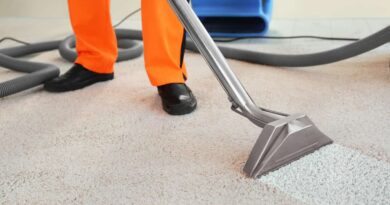How To Choose Quality Headphones?
Whether you’re buying headphones for the first time or looking to upgrade your old ones, there are a few basic criteria to help you choose the right headphones that are perfect for you.
We tell in detail how to choose headphones, what to look for, what advantages and disadvantages different types of headphones have, and how not to overpay for a quality model.
High-quality sound and comfortable use will largely depend on the correct combination of connection type, design, as well as additional, but important parameters.
Device Connection Type
According to the type of connection, headphones are divided into wired and wireless. How to choose wireless headphones?
Wireless headphones
They transmit sound using a Bluetooth signal, so they do not need wires to connect with another gadget. However, they can still have a cable: for example, to connect the headphones to each other or to charge from the network.
Pros:
- No need to get tangled up in long wires.
- Comfortable.
Minuses:
- Headphones need to be charged (and sometimes a charging case must be worn).
- Bluetooth connection will drain your smartphone or other another device.
- Must always be within a certain radius of the listening device.
Wired headphones
Transmit sound through a cable. When choosing high-quality wired headphones, you need to decide how long the cable you need: a 3-meter cable is usually used for home use, and for wearing outdoors it is more convenient to have a 1.2 m cable. For home, you can choose a straight plug, and for a smartphone or player – an angled one. This increases the chance that the headphones will last longer.
Pros:
- Stable, reliable connection.
- Do not require recharging.
- It’s hard to lose.
Minuses:
- Wires can be inconvenient in public places when playing sports.
- Wires and plugs may break.
- Functionality restrictions.
Construction (Form Factor)
Let’s review the headphones by design. All headphones are divided into three main groups: plug-in (“gags” and earbuds), overhead and full-size – they also include an additional category of bone ones.
In-ear headphones
Earplugs and earplugs differ in how they fit in the ear. The wireless earphones are usually of the same shape, they sit loosely in the auricle, leaving a small gap, so music at high volume will “leak” out of them. The “plugs” can be of different sizes or have additional ear tips to fit as tightly as possible directly into the ear canal. Silicone nozzles both cut off extraneous noise and prevent the music from “leaking”.
Pros:
- Lightweight and compact.
- Easy to put on and take off.
- Intra-channel provides good sound insulation.
Minuses:
- The sound from the earbuds may be heard by others.
- They do not completely cut off extraneous noise, which forces you to put the sound at high volume levels.
- Both earbuds and earplugs sit very close to the ear canal, so you need to be more careful with them than other types of headphones to protect your hearing.
On-ear headphones
They have a bow and two bowls that sit on the ears. They are lighter and smaller than full-size headphones and are suitable for those who would like a model with a headband and do not get along with in-ear headphones. Most often, the compact size allows you to supply them with sufficiently powerful and high-quality speakers.
Pros:
- Fairly compact.
- Easy to put on and take off.
- Good sound.
Minuses:
- After a long time of listening, they may begin to put pressure on the auricles.
- High price.
Over-ear headphones
The largest – in terms of weight and size – is the type of headphone. The cups fit the entire ear completely, and not just part of it, like overhead ones. This type of headphones can now be found without cables, with all the latest features.
Pros:
- Provide the best sound quality.
- Do not press on the ears.
- Comfortable for prolonged use.
Minuses:
- Often quite heavy and large.
- Their price is also usually higher than other types of headphones.
- Sometimes additional devices may be required to provide better sound quality.




